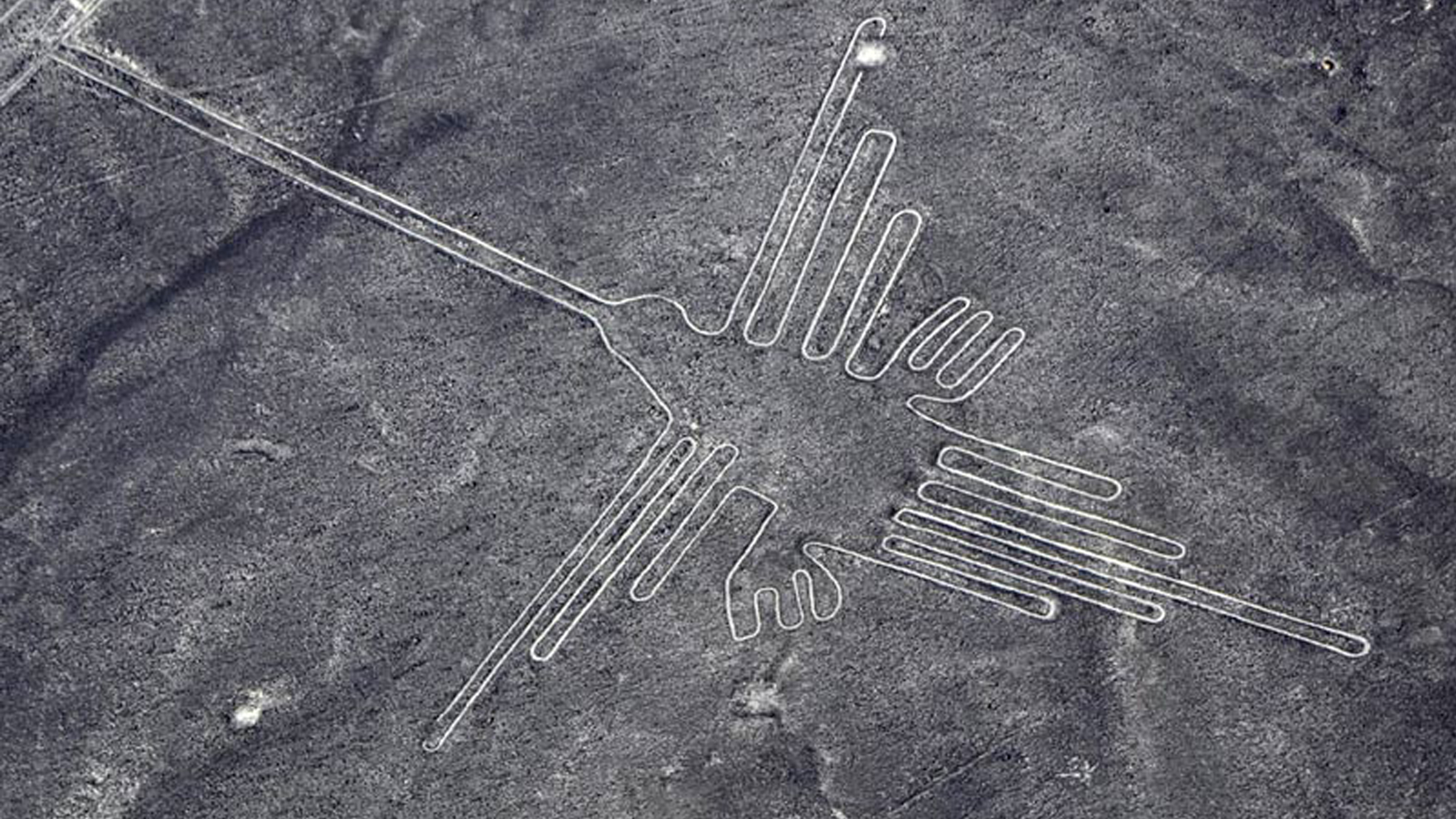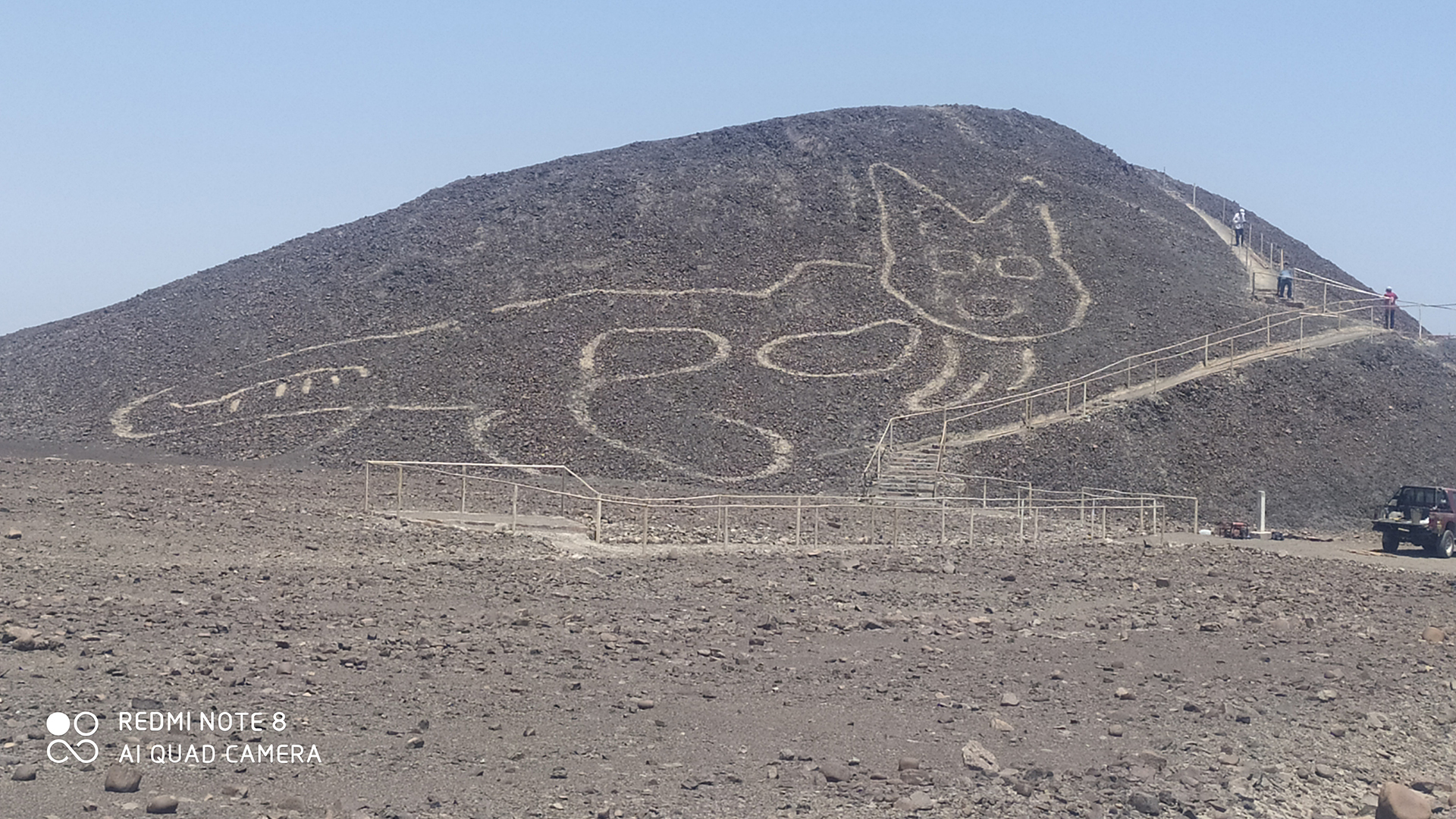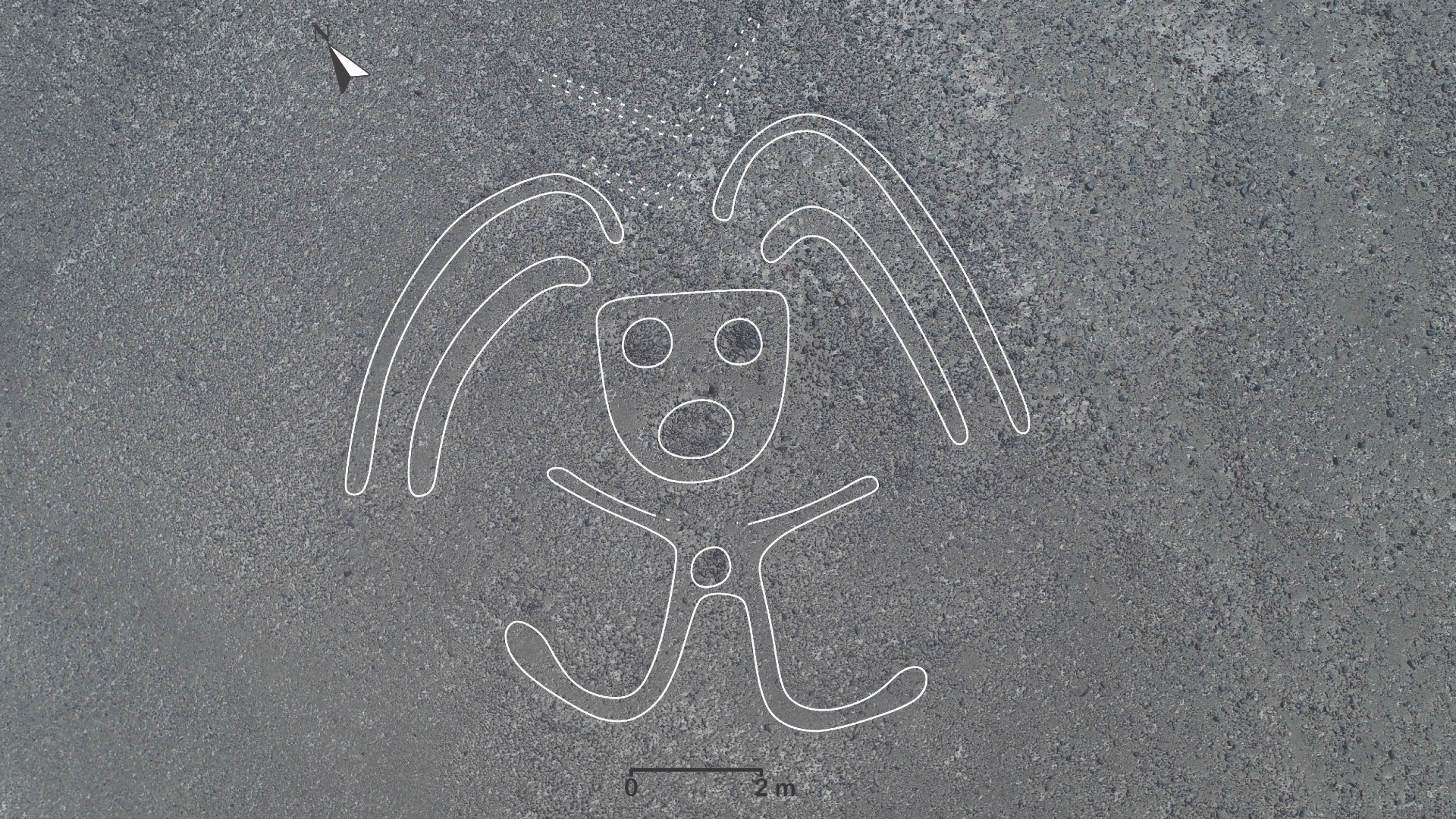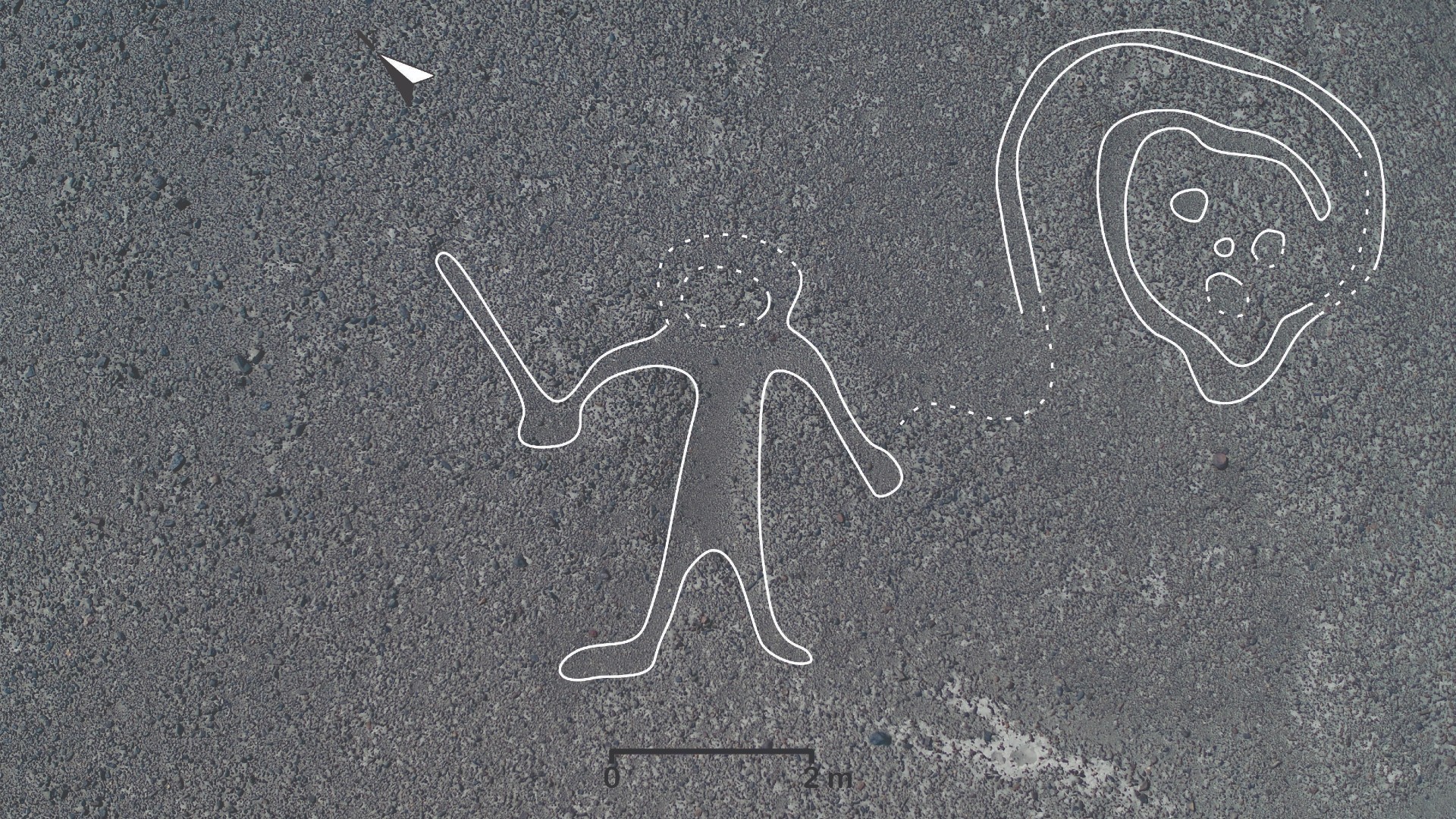Nazca Lines: Mysterious geoglyphs in Peru
These huge earthen creations in a Peruvian desert depict animals, plants and fantastic creatures.

The Nazca (also spelled Nasca) Lines are geoglyphs located in an arid coastal area of Peru that cover an estimated 170 square miles (450 square kilometers).
Scratched on the ground, the Nazca Lines number in the thousands and depict creatures from both the natural world and the human imagination. They include animals such as the spider, hummingbird, monkey, lizard, pelican and even a killer whale. Ancient artisans also depicted plants, trees, flowers and oddly shaped fantastic figures, as well as geometric motifs, such as wavy lines, triangles, spirals and rectangles.
How old are the Nazca Lines?
The vast majority of the lines date from 200 B.C. to A.D. 500, to a time when a people referred to as the Nazca inhabited the region. The earliest lines, created with piled up stones, date as far back as 500 B.C.

Who made the Nazca Lines?
The Nazca people were an ancient prehistoric culture that was successful in using engineering techniques to bring underground water to the surface for irrigation. Some of the theories regarding the purpose of the lines connect them to this need for water.
One of their largest settlements is Cahuachi, a place of ceremony that overlooks some of the lines. It contains more than 40 mounds, including pyramids made of adobe.

When were the Nazca Lines "discovered"?
Peruvian archaeologist Toribio Mejia Xesspe was the first to study and report the Nazca Lines in detail after coming across them, on foot, in 1927. In the 1930s as air traffic in the area increased, the lines became better known, eventually attracting a steady stream of tourists.
It's often stated that the lines can only be seen from the air; however, this is a myth. Research presented in 2007 that looked at 1,500 drawings in the Palpa region found that "each and every geoglyph" can be spotted from the ground.
Researchers continue to find Nazca Lines to this day. For instance, archaeologists found the outline of a massive cat measuring about 121 feet (37 meters) long in 2020 and an aerial investigation revealed 168 newfound geoglyphs that were "smaller and fainter" than previously discovered ones, scientists announced in 2022. One of these geoglyphs included a headless person whose head was tumbling away.

Theories and significance of the Nazca Lines
The purpose of the lines continues to elude researchers and remains a matter of conjecture. The Nazca culture was prehistoric, which means that they didn't leave any written records.
One idea is that the Nazca Lines are linked to the heavens, with some of the lines representing constellations in the night sky. Another idea is that the lines play a role in pilgrimage, with one walking across them to reach a sacred place such as Cahuachi and its adobe pyramids. Yet another idea is that the lines are connected with water, something vital to life yet hard to get in the desert, and may have played a part in water-based rituals.
In the absence of a firm archaeological conclusion a number of fringe theories have popped up, such as the idea that the Nazca people used balloons to observe the lines from up high, something which there is no archaeological evidence for.
Sign up for the Live Science daily newsletter now
Get the world’s most fascinating discoveries delivered straight to your inbox.

Owen Jarus is a regular contributor to Live Science who writes about archaeology and humans' past. He has also written for The Independent (UK), The Canadian Press (CP) and The Associated Press (AP), among others. Owen has a bachelor of arts degree from the University of Toronto and a journalism degree from Ryerson University.










